Lion Air flight’s ‘erratic’ struggle before fatal plunge
A FRIGHTENING account has emerged from a TV star who flew on the doomed Lion Air plane, just hours before it crashed killing everyone on board.
FRIGHTENING details have emerged of problems on the previous flight of the ill-fated Lion Air plane that crashed into the Java Sea, killing all 189 on board.
Issues which should have served as a warning, such as rapid descents that reportedly terrified passengers, occurred on the Boeing 737 MAX 8 jet before it took its final flight on Monday.
The plane, which flew from Bali to Jakarta on Sunday, suddenly dropped several times in the first few minutes of the flight.
“About three to eight minutes after it took off, I felt like the plane was losing power and unable to rise,” passenger Alon Soetanto told TVOne.
“That happened several times during the flight. We felt like in a roller coaster. Some passengers began to panic and vomit.”
Passengers from the Sunday flight, which was delayed, took to social media to report concerns about problems with the air-conditioning system and cabin lighting before the plane eventually departed, the Strait Times reported.

In a detailed post online, Indonesian TV presenter Conchita Caroline, who was on Sunday’s flight, said boarding was delayed by more than an hour because a technical problem forced it to return to its parking space.
“I was angry because as a passenger who had paid her ticket, we have every right to question the aircraft’s safety,” she said in the now-removed post, according to the Times.
She said there was a “weird” engine noise upon takeoff that lasted for the whole flight.
After its initial struggle, the aircraft eventually came to a steady climb and cruise before landing safely. It was not the same story when the same plane took off for its one-hour flight the next day.
Passengers on Lion Air’s ill-fated flight JT610 experienced similar sickening drops in altitude in the 13 minutes they were in the air before the plane plummeted with rapid speed into the Java Sea.
The Boeing 737 MAX 8 struggled from the moment it began on what would be its final flight on Monday, erratically climbing and dropping until it eventually plunged 1479m in just 21 seconds.
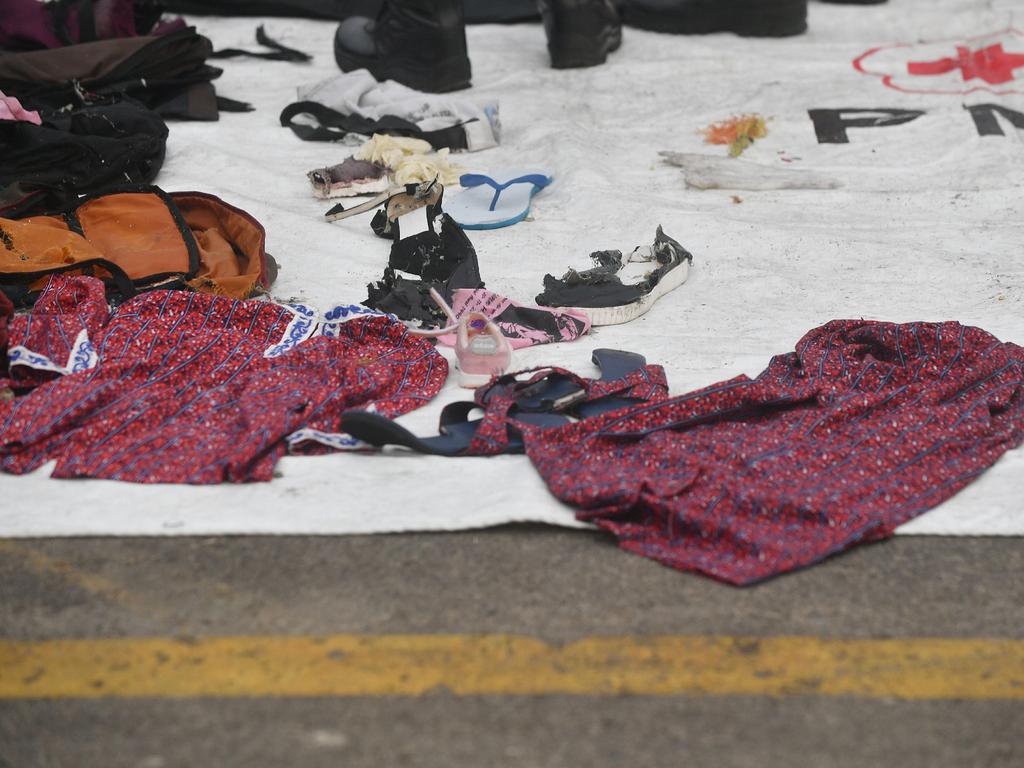


Investigators will looking closely at pilot Bhavye Suneja’s final message to air traffic control three minutes after takeoff, when he asked to turn around and return to Jakarta airport. The reason for his request is unknown and communication with his plane was lost almost immediately after he was given the all-clear to turn around.
A frantic search is underway for the plane’s black box, which will hopefully unlock the mystery of what went wrong with the Boeing 737 MAX 8 that was bought in August and had only flown 800 hours.
Lion Air president Edward Sirait said there were reports of technical problems with Sunday’s flight from Bali, but they had been resolved in accordance with the plane manufacturer’s procedures.
But on Monday, the plane’s altitude and speed patterns were erratic for almost all of its 13 minutes in the sky.
Data from Flightradar24 shows that Lion Air plane climbed to 640m after takeoff before dropping down to 450m.
It climbed again and continued unsteadily for a few minutes between 1370m and 1630m before fatally plunging at a breakneck speed of 9400m per minute.
A normal descent for an airliner would be about 450m to 600m per minute, aviation safety expert John Cox told Bloomberg.


“This thing really comes unglued,” he said. “The numbers are barely believable.”
Aviation expert Philip Butterworth-Hayes, who studied the plane’s flight data, said it was particularly unusual as takeoffs were usually controlled by the plane’s automatic systems.
“This doesn’t fit an automatic flight profile,” Mr Butterworth-Hayes told CNN.
“Unless, the aircraft was trying to correct itself at the time for a number of reasons.
“This shows an unusually unstable vertical flight profile.
“Exactly at the same time as the speed increased there was an altitude dip, which meant that at that point there was quite some loss of control.”


QUESTIONS ABOUT THE BOEING 737 MAX 8
The plane model itself is now coming under scrutiny.
Indonesian officials have ordered the inspection of all Boeing 737 MAX 8 planes belonging to national commercial airlines.
Transportation ministry official Captain Avirianto said Lion Air had 11 Boeing 737 MAX 8s in its fleet and national carrier Garuda Indonesia had one.
“We have inspected Garuda last night while Lion is still in progress,” he said, adding that the ministry hoped to inspect at least three of Lion Air’s planes Tuesday night and the other eight soon.
The Lion Air crash appears to be the first involving the Boeing 737 MAX 8, a more fuel-efficient update of best-selling Boeing’s 737.
Meanwhile the gruesome search for the victims continues.
Thirty seven bags have now been filled with “body parts” of the passengers, which were found floating in the ocean.
Among the remains were those of a baby.
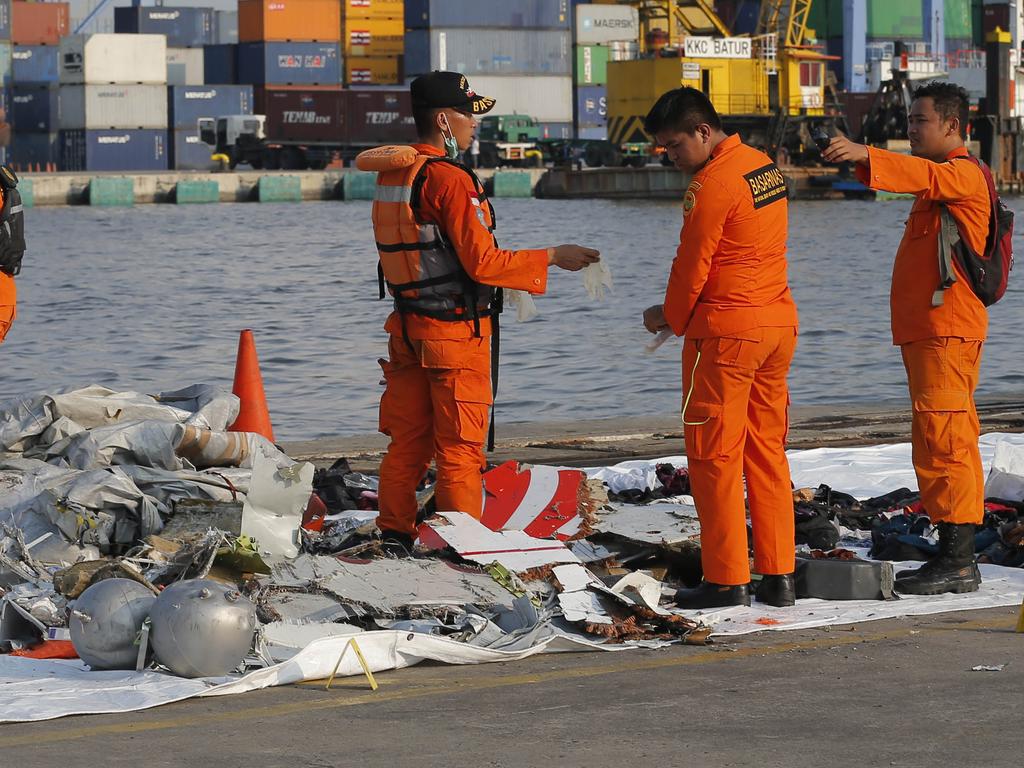
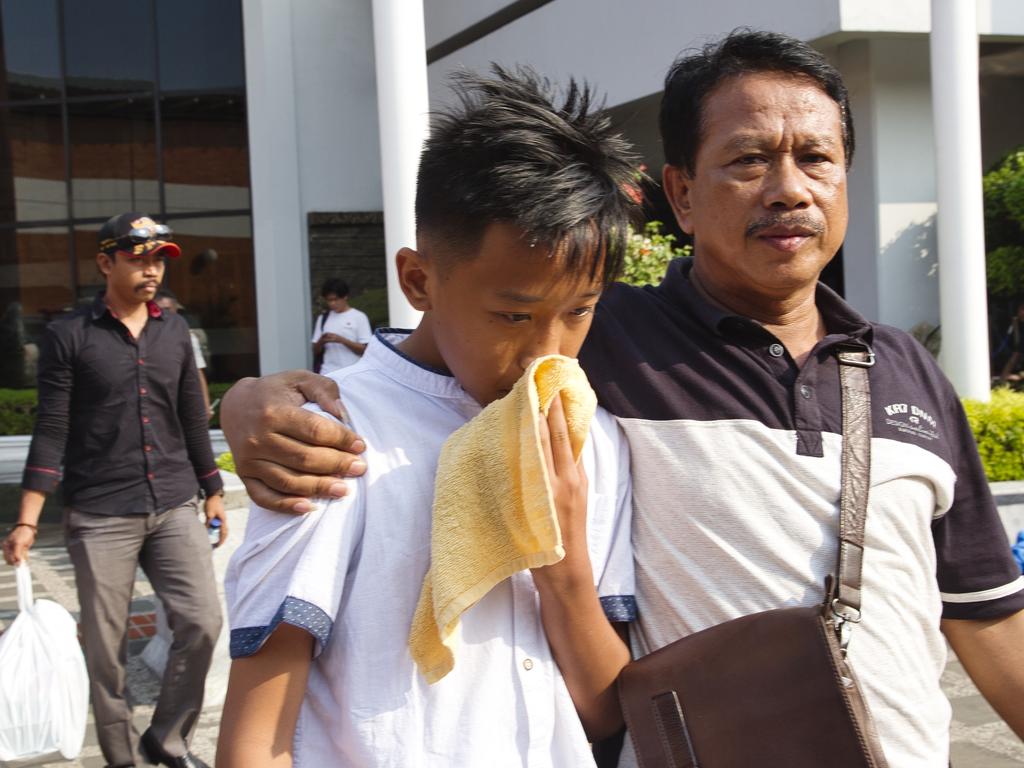
The recovery of bodies is being complicated because parts of the plane is submerged in water up to 30m deep.
Grieving relatives have provided DNA samples to help try and identify their loved ones. The impact of the crash meant many victims’ bodies were not left intact.
‘IMPOSSIBLE TO SAY WHAT HAPPENED’
Speculation is rising about what caused the aircraft carrying 189 people to crash.
Some reports suggest the aircraft had technical faults, while other experts say they’re looking at the possibility of a bomb being involved.
But according to aviation consultant and former pilot Alastair Rosenschein, we won’t have a definitive answer on what caused the crash until authorities recover the plane’s black box.
“It is almost impossible to say just what happened,” Mr Rosenschein told CNN. “At this point, some sort of mechanical failure is probably the most likely, but this is purely speculative.”
The aviation expert said that until the black box is found, it would remain unlikely authorities could figure out what brought down the plane.
He noted it’s especially important to find the black box quickly because the doomed plane was a newer model.
“What happened here could possibly affect the same model of aircraft flying in other parts of the world,” he said.
Investigators have deployed underwater beacons to trace the flight’s black box recorders, but so far they are yet to make a discovery.
The top priority will be finding the cockpit voice recorder and flight data recorder to help determine the cause, safety experts said.
As the plane crashed in shallow water, recovering the black boxes should be easier than with deepwater crashes such as AirAsia Indonesia flight QZ8501 in 2014 and Air France flight 447 in 2009, said Greg Waldron, managing editor of Flightglobal Asia, an industry publication.
HOW THE DISASTER UNFOLDED
This is what happened after the ill-fated Lion Air flight took off. All times are in Jakarta local time.
6.20am: JT 610 takes off from Jakarta’s Soekarno-Hatta International Airport. Its arrival at Pangkal Pingang airport is scheduled for 7.20am
6.23am: Pilot Bhavye Suneja asks air traffic control for permission to turn around and return to Jakarta airport. His request is approved.
6.33am: The aircraft loses contact with air traffic control and plunges into coastal waters less than 35m deep in the Java Sea.
6.45am: The crew of a tugboat report to maritime authorities they have seen a downed plane, suspected to be a Lion Air plane, in the water. Vessels are dispatched to the area.
9.18am: Lion Air confirms it has lost contact with flight JT 610, The Associated Press reports. “We can confirm that one of our flights has lost contact,” Lion Air spokesman Danang Mandala Prihantoro says. “Its position cannot be ascertained yet.”
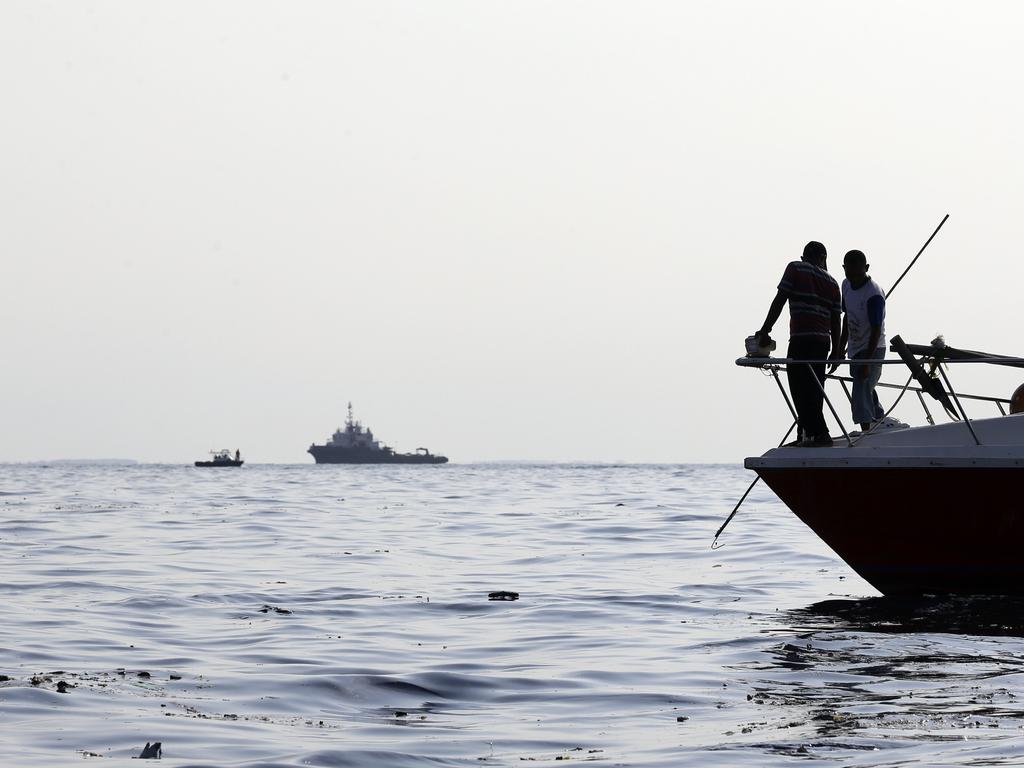
10.11am: Indonesia’s disaster agency spokesman Sutopo Purwo Nugroho posts on Twitter a video of aircraft debris floating in the water.
10.40am: By now it is confirmed there were 181 passengers on board, including one child and two babies, and eight crew.
Serpihan pesawat Lion Air JT 610 yang jatuh di perairan Karawang. Beberapa kapal tug boad membantu menangani evakuasi. Video diambil petugas tug boad yang ada di perairan Karawang. pic.twitter.com/4GhKcRYkpG
— Sutopo Purwo Nugroho (@Sutopo_PN) October 29, 2018
Midday: Families of those on-board begin arriving at Indonesia’s National Search and Rescue Agency headquarters in Jakarta for word on the fate of their loved ones.
12.22pm: Boeing, the manufacturer of the crashed 737 Max 8, releases a statement. “We express our concern for those on board, and extend heartfelt sympathies to their families and loved ones,” it says.
12.38pm: Australia’s Ambassador to Indonesia Gary Quinlan tweets the Australian government is working to determine if any Australians are on board the crashed flight. None has been confirmed so far.
We are aware of concerning reports about missing Lion Air flight JT610 that left Jakarta for Pangkal Pinang in Bangka Belitung this morning. Indonesian authorities are undertaking a search and rescue operation. We are making enquiries to determine if any Australians are affected.
— Gary Quinlan (@DubesAustralia) October 29, 2018
2pm: By now a team of 300 people including soldiers, police and local fishermen are searching for the plane. ID cards, personal belongings and aircraft debris are recovered but no human remains.


4.30pm: Some human remains are recovered.
5.10pm: The head of Indonesia’s search and rescue agency Bambang Suryo Aji says he doesn’t expect any survivors.


LION AIR’S DARK PAST
The crash of the Lion Air flight, despite clear weather, experienced flight crew and a Boeing 737 just two months old, has cast a dark spotlight on Indonesia’s chequered aviation history and that of Lion Air, one of the country’s biggest and youngest airlines that has just suffered its deadliest disaster.
The low-cost airline, which launched in 2000, has seen a number of crash landings and aircraft malfunctions. These are some of the most dramatic moments in the airline’s short history.

2004: Just four years after it started operating, Lion Air suffered its first deadly crash. Twenty-five people were killed when flight 538 crashed into a cemetery in Surakarta, Java.
2006: A McDonnell Douglas aircraft was written off when it crashed after touching down at Juanda International Airport and skidding off the runway. It was found the left thrust reverser, which was needed for the landing, was out of service. There were no fatalities.
2007: All Indonesian airlines, including Lion Air, were banned from flying to Europe due to safety concerns. The European Union’s ban relaxed over the next decade, and was completely lifted in June. The US also lifted a 10-year ban on Indonesian airlines in 2016.

2010: Some passengers were injured when flight 712 landed on its belly at Supadio Airport. All 174 passengers and crew were evacuated by the emergency slides.
2011 and 2012: Lion Air pilots were arrested for drug possession.
2013: On April 13, flight 904 from Bangdung to Denpasar with 108 people on board crashed into waters near Bali after overshooting the runway. The fuselage of the Boeing 737-800 split into two parts and passengers had to swim for their lives. Miraculously, all survived.

2014: Two passengers were seriously injured and three suffered minor injuries when a Boeing 737-900 landed hard on the runway at Surabaya’s Juanda airport and bounced five times on the runway.
2017: About 300 litres of fuel spilt on the tarmac at Surabaya’s Juanda International Airport from a Lion Air aircraft’s wings. All passengers were evacuated and the plane was grounded for further investigation.
2018: On April 28, flight 892 ran off the runway at Jalaluddin Airport after landing in heavy rain and darkness. The main nose gear collapsed but there were no fatalities.
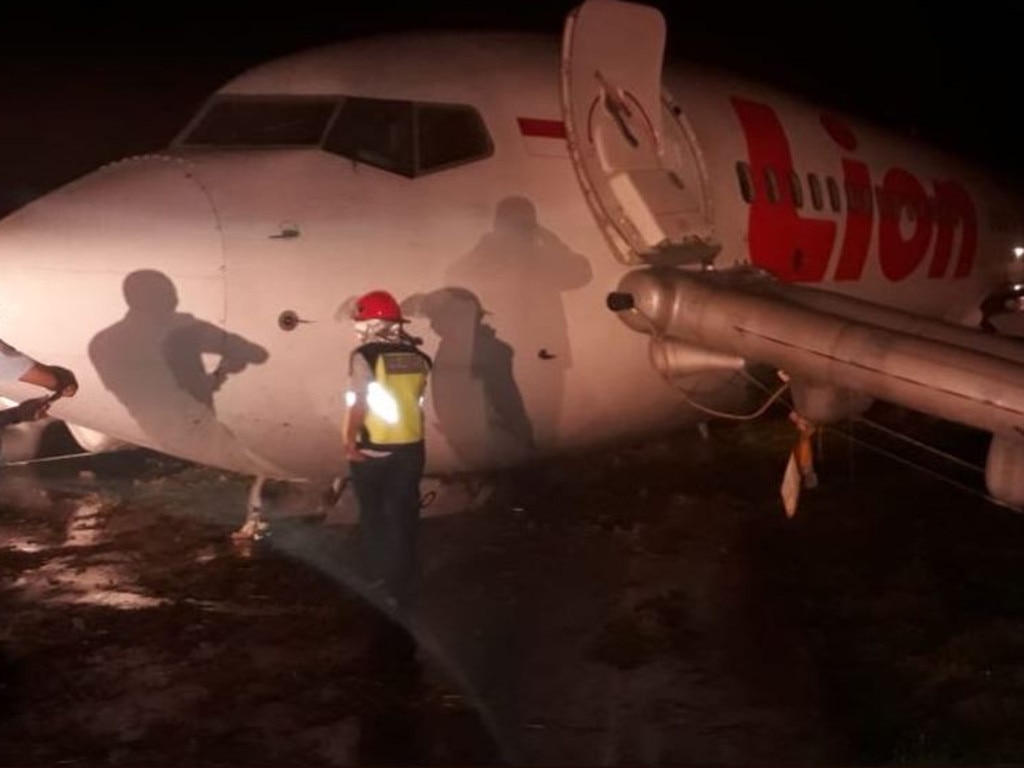
The Australian Government has told government officials and contractors not to fly on Lion Air pending findings from the crash investigation.
Lion Air’s parent company has a presence in Australia through two subsidiaries: Malaysia-based Malindo Air, which services Brisbane, Melbourne and Perth, and Batik Air, which flies between Perth and Bali.
The company is believed to be looking to expand its network in Australia.
The Civil Aviation Safety Authority said on Monday the crash of the Lion Air plane would be taken into account when carrying out safety checks on Malindo and Batik, The Australian reported.

In early October, a Malindo Air Boeing 737 bound for Denpasar raised concerns when it turned left instead of flying straight ahead when taking off at Melbourne airport.
The European Commission said it had no immediate plans to ban Indonesian airline Lion Air again after yesterday’s crash.
Harro Ranter, who runs the Aviation Safety Network, told AP that Indonesian airlines dealt with difficult terrain, frequent bad weather leading to poor visibility and shortcomings with air traffic controllers.
“Indonesia does stand out … they did have some really bad accidents in the past,” he said.
“It’s hard to judge if they have made sufficient progress with regard to safety.”



